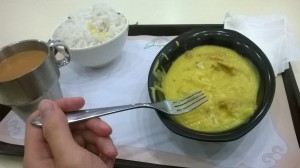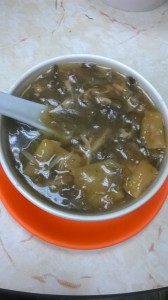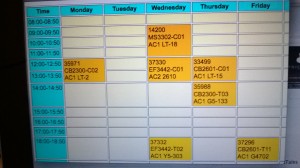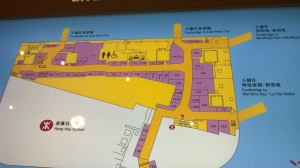Hong Kong: If You Can’t Beat ‘Em, Eat ‘Em! (No Cannibalism, Please!)
Author: R.C. | Filed under: Blogs of Hong KongIf there was one thing, absolutely a singular objective to commit to in a foreign place, it would be to eat.
Okay, perhaps I shouldn’t be so literal, but food is one of the great ways of experiencing culture in a new place. Whether it’s the difference between New York and Texas or between London and Hong Kong, the food is up there in terms of cultural identity.
And if we’re going to talk about food, we’re going to have to start with rice. As a person of Asian descent myself (culture and all), I get, to some extent, how central and vital rice is to a meal. It is the staple to which all other foods complement, a starch to fill what other foods may not. Whether cooked in its most basic and common form, or cooked with water, as congee (others may call it porridge), or compressed into fun shapes, rice is nearly omnipresent. With a neutral flavor and significant mouthfeel, it’s a great vessel for accompanying most other foods.
So, long story short, expect rice.
But, if you can get congee, I would certainly recommend it. Most congees are very light in flavor, be it chicken or beef or what have you. (I say light as in not as unctuous, not light as in lacking.) It’s effectively like a thick soup, though less heavy than actual thick soup.
But before I go on, I should post a word of warning.
It was to be expected, but be aware that almost everything that is cooked—even those in informal and familial gatherings—will likely contain MSG. MSG, or monosodium glutamate, is that magical ingredient that produces the so-called “umami” flavor. Sometimes it works, like salt, to draw out the best flavors in food.
For me… I was not a big fan of the seasoning. I don’t know whether it can be technically termed a seasoning, but people in Hong Kong effectively use it as such. Sometimes MSG is overbearing, a sort of parallel to oversalted food. At other times, it just doesn’t feel like it should be there. I think the worst application was when I tasted MSG in plain congee; it just had no purpose there other than to muddy up a good bowl of plain congee.
But I digress; food is more than just the extras.
There was dim sum. There was a lot of it. Spring rolls, dumplings, wantons… Buns, chicken feet, cow tripe… Well, some of the things on the menu might not be up to your preferences, but it was worth giving some of them a try. In some restaurants, I could eat only dim sum and be fully sated by the assortment alone.
And then there were times when a good meal—a good, full course meal—was what was needed. In terms of native cuisine, there was plenty to be had. Good old char sui (or however you like to write it—BBQ pork seemed to be the consistent translation) was on every menu—as were salted chicken, noodles, congee, and so on. Some places had better quality than others, but overall it felt like the quality was definitely a step above the stuff I found in New York (sorry, Manhattan Chinatown!).
The canteen pantry had a wider variety of foods to choose from. Catering to the global participants of their university, CityU likewise has a plethora of meals of varying flavors, Eastern, Western, and so on. What sliders? Sure. Fancy some curry? Here you go.
However, the one thing I wanted to do while abroad that was food related was to eat eccentric food. Maybe it was because I spent too much time watching Bizarre Foods with Andrew Zimmern, but odd cuisine that didn’t make me queasy on first sight had a strange allure to it.
So here’s some snake soup. Well, not solely snake; there was some chicken, pork, and other goodies mixed in to mellow out the flavor, since snake meat is apparently fairly bitter. It was great.
There was also stuff like pig’s blood, frog legs, shark fin soup and turtle jelly. For some of the more controversial foods like the last two, I think the ones I had were some of the faux stuff. The local populace can be finicky about these foods.
In all, I would highly recommend Hong Kong cuisine. If you can get a trusted native (or pseudo-native) to guide you around more out-of-the-way locales and joints where English is not the common tongue, you’ll probably find some of the best noodles and such that Hong Kong has to offer.








